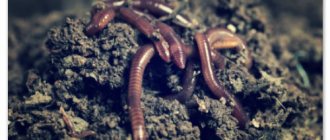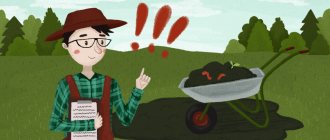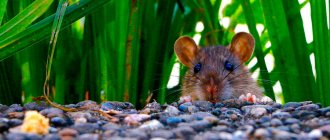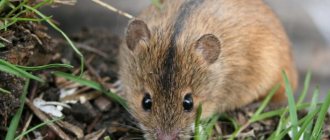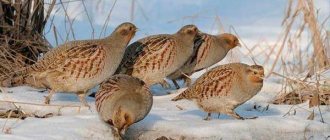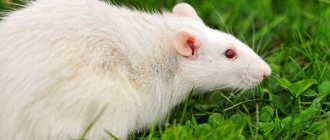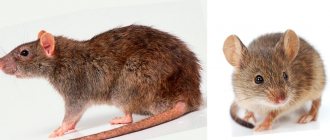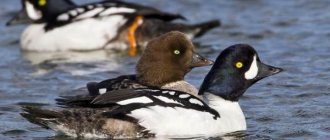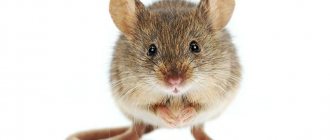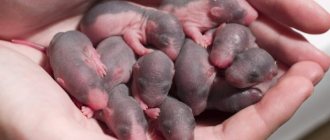Many people underestimate the importance of the work of earthworms. These representatives of the invertebrate kingdom are best known for crawling out of the ground in large numbers after heavy rain. They are often used as bait by numerous fishing enthusiasts. Darwin also noted the fact that worms perform an important function in nature, acting as a kind of agricultural technicians. In the process of creating an extensive system of tunnels, which the earthworm digs through, excellent aeration is formed by supplying air to the inner layers of the soil.
Thanks to excellent aeration, the respiratory activity of many plants is facilitated. Feeding on organic matter and waste, worms ensure the grinding of soil components, enriching them with their secretions. The amazing ability of representatives of this species is the ability to disinfect large areas of soil, sterilizing it from harmful bacteria. Thanks to countless holes, forming a kind of capillary system, ideal drainage and aeration of the soil is ensured.
Origin of the species and description
Photo: Earthworm
Lumbricina belong to the suborder of oligochaete worms and belong to the order Haplotaxida. The most famous European species belong to the family Lumbricidae, which contains about 200 species. The benefits of earthworms were first noted by the English naturalist Charles Darwin in 1882.
When it rains, the burrows of earthworms fill with water and they are forced to crawl to the surface due to lack of air. This is where the name of the animals comes from. They occupy a very important place in the structure of the soil, enriching the soil with humus, saturating it with oxygen, and significantly increasing productivity.
Video: Earthworm
In Western Europe, dried worms were processed into powder and applied to wounds to promote healing. The tincture was used to treat cancer and tuberculosis. The decoction was believed to help with ear pain. Spineless, boiled in wine, treated jaundice, and with the help of oil infused with invertebrates, they fought against rheumatism.
In the 18th century, the German doctor Stahl treated patients with epilepsy with a powder made from washed and ground worms. In Chinese folk medicine, the drug was used to combat atherosclerosis. Russian folk medicine practiced the treatment of cataracts using the liquid dripping from salted fried worms. It was dropped into the eyes.
Interesting fact: Australian Aborigines still eat large types of worms, and in Japan they believe that if you urinate on an earthworm, the causative area will swell.
Invertebrates can be divided into 3 ecological types, depending on their behavior in the natural environment:
- epigeic - do not dig holes, live in the top layer of soil;
- endogeic - live in branched horizontal burrows;
- anecic - feed on fermented organic matter and dig vertical burrows.
Appearance and features
Photo: Earthworm on the ground
Body length depends on the species and can vary from 2 centimeters to 3 meters. The number of segments is 80-300, each of which has short bristles. Their number can be from 8 units to several dozen. Worms rely on them when moving.
Each segment consists of:
- skin cells;
- longitudinal muscles;
- cavity fluid;
- circular muscles;
- bristles.
The muscles are well developed. The creatures alternately compress and lengthen the longitudinal and circular muscles. Thanks to contractions, they can not only crawl through burrows, but also expand the holes, pushing the soil to the sides. Animals breathe through sensitive skin cells. The epithelium is covered with protective mucus, which is saturated with many antiseptic enzymes.
The circulatory system is closed and well developed. The blood is red. The invertebrate has two main blood vessels: dorsal and abdominal. They are connected by ring vessels. Some of them contract and pulsate, driving blood from the spinal to the abdominal vessels. The vessels branch into capillaries.
The digestive system consists of the mouth, from where food enters the pharynx, then into the esophagus, an enlarged crop, and then into the muscular stomach. In the midgut, food is digested and absorbed. The remains come out through the anus. The nervous system consists of the ventral chain and two nerve ganglia. The ventral nerve cord begins with the peripharyngeal ring. It contains the most nerve cells. This structure ensures the independence of the segments and the consistency of all organs.
The excretory organs are presented in the form of thin curved tubes, one end of which goes into the body and the other out. Metanephridia and excretory pores help remove toxins from the body into the external environment when too much of them accumulates. There are no organs of vision. But there are special cells on the skin that sense the presence of light. The organs of touch, smell, and taste buds are also located here. The ability to regenerate is a unique ability to restore a lost part of the body after damage.
Life cycle
The lifespan of an earthworm can be up to 10 years, but most often it averages 4-8 years. His cycle is well known to everyone from drawings, pictures and stories from biology textbooks, and consists of the following stages:
- Tiny worm larvae emerge from the cocoon. In these invertebrates, the process of incubation of eggs takes up to 2-8 weeks, and then the young generation emerges on the surface of the earth. If the air temperature is high for a long time, the worms will grow faster. With regular rainfall, it will take about 2 weeks for the eggs to mature. In regions with colder climates, this process will take approximately two months.
- Adult worms molt and mature. In the first weeks of life, they begin active development; a number of updates, new designations and changes occur in the reproductive system. Upon reaching one year of age, the worm is already capable of having its own offspring.
- At this stage, the need for reproduction is formed. Despite the fact that earthworms can be classified as hermaphrodites, they mate together. After copulation of two representatives of the species, a special shell is formed, inside which there is sperm. The process of fertilization occurs in each of the bodies.
- The last stage of the worm's life cycle is when they produce a natural cocoon. Upon completion of reproduction, the separation of individuals occurs. In both bodies, a cocoon of a certain pattern is formed, which then rolls into the ground and matures there. Each of them normally contains 1-5 embryos, which are then born.
Where does the earthworm live?
Photo: Earthworm in Russia
The spineless are divided into those who find their food underground and those who seek food on it. The first are called bedding and do not dig holes deeper than 10 centimeters, even during periods of freezing or drying out of the soil. Soil-litter can go down 20 centimeters.
Burrowing earthworms descend to a depth of one meter. This type can very rarely be found on the surface, since they practically do not rise to the top. Even during the mating process, invertebrates do not completely protrude from their burrows.
You can see earthworms everywhere, with the exception of frosty arctic places. The burrowing and litter categories thrive in waterlogged soils. They can be found near ponds, in swamps and in areas with a humid climate. Soil types love steppe chernozems, litter and soil-litter soils love tundra and taiga.
Interesting fact: Initially, only a few species were widespread. The expansion of the range occurred as a result of human introduction.
Invertebrates easily adapt to any territory and climate, but feel most comfortable in areas of coniferous broad-leaved forests. In summer they are located closer to the surface, but in winter they descend deeper.
Suitable soil
The earthworm usually prefers areas with moist and loose soil. They are suitable for humid subtropics, the banks of various rivers, ponds and reservoirs, as well as wetlands. In the steppes, soil subspecies of earthworms are most often found. Litter types usually live in forest-tundra and taiga. Most of their representatives are in broad-leaved coniferous belts.
An important role for them is played by the reduced acidity of the soil. Loams and sandy loams have this characteristic, which is why these invertebrates love them. If the acidity of the soil rises above 5.5, such areas become deadly for these annelids. The reproduction function normally occurs only in moist conditions. If the weather is hot and dry for a long time, they burrow deep into the ground, where they cannot reproduce.
What does an earthworm eat?
Photo: Large earthworm
Animals consume half-rotted plant remains as food, which enter their mouths along with the soil. During passage through the midgut, soil is mixed with organic matter. Invertebrate excrement contains 5 times more nitrogen, 7 times more phosphorus, 11 times more potassium compared to soil.
The diet of earthworms includes rotting animal remains, lettuce, manure, insects, and watermelon rinds. The creatures avoid alkaline and acidic substances. The type of worm also influences taste preferences. Nocturnal individuals, true to their name, search for food after dark. The veins are left, eating only the pulp of the leaf.
Having found food, the animals begin to dig the soil, holding the find in their mouths. They prefer to mix their food with soil. Many species, such as red worms, travel to the surface to search for food. When the content of organic matter in the soil decreases, individuals begin to look for more suitable conditions for life and migrate to survive.
Interesting fact: In a day, an earthworm eats as much as it weighs.
Due to their slowness, individuals do not have time to absorb vegetation on the surface, so they drag food inside, saturating it with organic matter, and store it there, allowing their fellow creatures to feed on it. Some individuals dig a separate storage hole for food and visit it if necessary. Thanks to tooth-like projections in the stomach, food is ground into small particles inside.
Spineless leaves are used not only for food, but also to cover the entrance to the hole. To do this, they drag withered flowers, stems, feathers, scraps of paper, and tufts of wool to the entrance. Sometimes leaf stalks or feathers may protrude from the entrances.
Features of character and lifestyle
Photo: Red earthworm
Earthworms are primarily underground animals. First of all, it ensures safety. The creatures dig holes in the ground with a depth of 80 centimeters. Larger species dig tunnels up to 8 meters deep, due to which the soil is mixed and moistened. Animals push soil particles aside or swallow them.
With the help of mucus, invertebrates move even in the hardest soil. They should not be exposed to the sun for a long time, as this threatens the worms with death. Their skin is very thin and dries out quickly. Ultraviolet radiation has a detrimental effect on the skin, so you can see animals only in cloudy weather.
The suborder prefers to be nocturnal. At night, you can find clusters of creatures on the ground. When they lean out, they leave part of their body underground, scouting out the situation. If nothing frightens them, the creatures completely emerge from the ground and look for food.
The body of invertebrates tends to stretch well. Many bristles bend, protecting the body from external influences. It is very difficult to pull a whole worm out of a burrow. The animal defends itself and clings to the edges of the burrow with its bristles, so it is easy to tear it.
The benefits of earthworms are difficult to overestimate. In winter, in order not to hibernate, they descend deep underground. With the arrival of spring, the soil warms up and individuals begin to circulate through the dug passages. With the first warm days they begin their working activity.
Social structure and reproduction
Photo: Earthworms on the site
Animals are hermaphrodites. Reproduction occurs sexually, by cross-fertilization. Each individual that has reached puberty has female and male genital organs. The worms are connected by mucous membranes and exchange sperm.
Interesting fact: Invertebrate mating can last up to three hours at a time. During the courtship period, individuals climb into each other's burrows and mate 17 times in a row. Each sexual intercourse lasts at least 60 minutes.
The reproductive system is located in the front of the body. Sperm are located in the seminal receptacles. During mating, cells on segment 32 secrete mucus, which subsequently forms an egg cocoon, fed by protein fluid for the embryo. The secretions are transformed into a mucous membrane.
Spineless lay eggs in it. The embryos are born after 2-4 weeks and are stored in a cocoon, reliably protected from any influences. After 3-4 months they grow to adult size. Most often, one baby is born. Life expectancy reaches 6-7 years.
The Taiwanese species Amynthas catenus has lost its genitals during evolution and reproduces through parthenogenesis. This is how they pass on 100% of their genes to their descendants, resulting in the birth of identical individuals - clones. So the parent acts as both father and mother.
Natural enemies of the earthworm
Photo: Earthworm in nature
In addition to weather events that disrupt the normal life of animals with floods, frosts, droughts and other similar phenomena, predators and parasites lead to population decline.
These include:
- moles;
- small predators;
- amphibians;
- centipedes;
- birds;
- horseleech.
Moles eat earthworms in large quantities. It is known that they make provisions for the winter in their burrows, which mainly consist of earthworms. Predators bite off the spineless head or severely damage it so that it does not crawl away until the severed part is regenerated. The big red worm is considered the most delicious for moles.
Moles are especially dangerous for invertebrates due to their large numbers. Small mammals hunt for worms. Voracious frogs watch for individuals at their burrows and attack at night, as soon as their heads appear above the ground. Birds cause great damage to numbers.
Thanks to their keen eyesight, they can see the ends of worms sticking out of holes. Every morning, birds in search of food pull spineless ones out of the entrances with their sharp beaks. Birds feed not only on adults, but also pick up cocoons with eggs.
Horse leeches, found in various bodies of water, including puddles, do not attack humans or large animals due to their blunt jaws. They cannot bite through thick skin, but they can easily swallow a worm. At autopsy, the stomachs of the predators contained undigested remains of worms.
What are these creatures?
Biology classifies these representatives of the animal world as annelids. If you look closely at them, then on their thin body (50 mm in diameter, 15-30 cm in length) you can see rings, the number of which can sometimes reach 300. There are also very small worms about 2 cm. Few people know that There are giant worms that reach up to 2 meters in length. But they, like the others, are completely harmless and harmless to humans.
Population and species status
Photo: Earthworm
Normal, uncontaminated soil on arable farms can contain between one hundred thousand and one million worms. Their total weight can range from one hundred to a thousand kilograms per hectare of land. Vermiculture farmers grow their own populations for greater soil fertility.
Worms help process organic waste into vermicompost, which is a high-quality fertilizer. Farmers increase the mass of invertebrates to feed them for farm animals and birds. To increase the number of worms, compost is prepared from organic waste. Fishermen use spineless fish to catch fish.
When studying ordinary chernozem, three species of earthworms were found: Dendrobaena octaedra, Eisenia nordenskioldi and E. fetida. The first were 42 units per square meter of virgin land, 13 of arable land. Eisenia fetida was not found in virgin land, and 1 individual was found in arable land.
In different habitats, the number varies greatly. In the water meadows of the city of Perm, 150 specimens/m2 were found. In the mixed forest of the Ivanovo region - 12221 specimens/m2. Pine forest of the Bryansk region - 1696 specimens/m2. In the mountain forests of the Altai Territory in 1950 there were 350 thousand specimens per m2.
Substrate preparation
Since worms can only eat softened food, waste requires preliminary preparation. Thanks to composting (this is the process of primary decomposition of organic matter), a nutritious substrate for pets is produced from any waste. The decomposition time of individual types of waste differs, and the farmer must take this into account so that the feed has time to ripen on time. Grinding speeds up decomposition time.
Table No. 1. Waste composting
| № | Name of waste | Composting time | Note |
| 1 | Plant residues: tops, grass, foliage, weeds, etc. | Softens in 1-3 months | Avoid putting poisonous or overly aromatic herbs into the composter. |
| 2 | Paper | No preparation required | Soak with clean water before placing in the composter. |
| 3 | Natural fabrics, hard plant debris (straw, husks, husks), sawdust, branches | 3 – 12 months | The waste is rich in nitrogen and takes a long time to decompose. It is good to mix them with vegetable and kitchen scraps, manure |
| 4 | Vegetables, berries, fruits, kitchen cleaning, leftover food | 3 – 14 days | Juicy waste loses a lot of moisture during primary decomposition, and the compost yield from it is small |
| 5 | Manure, bird droppings | 3-6 months (primary decomposition occurs when the temperature rises to 75°C and releases gases dangerous to worms) | It is necessary for the “burning” process to be completed in the substrate. After 2 years of storage, humus from manure is not suitable for worm food. |
Composting creates conditions where food decomposes as quickly as possible. This is a closed space with limited air access, humidity from 60-70% and temperature not lower than 15-25°C. The substrate is periodically mixed (for uniform composting) and moistened. In moderation, ash or chalk is added to the substrate for deoxidation.
Soft foods soften after freezing or heat treatment (vegetables, fruits). EM technologies also speed up composting.
